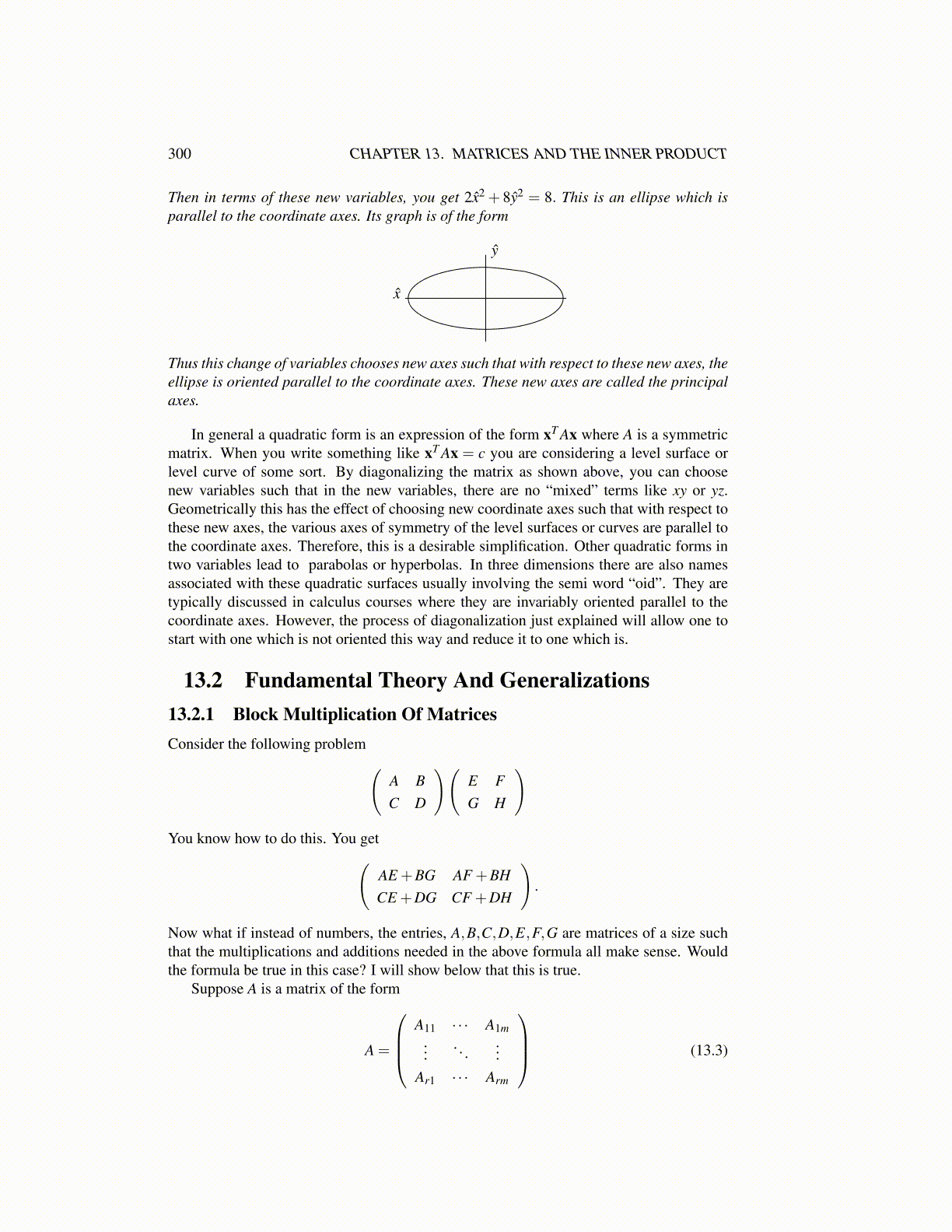
300 CHAPTER 13. MATRICES AND THE INNER PRODUCT
Then in terms of these new variables, you get 2x̂2 + 8ŷ2 = 8. This is an ellipse which isparallel to the coordinate axes. Its graph is of the form
x̂
ŷ
Thus this change of variables chooses new axes such that with respect to these new axes, theellipse is oriented parallel to the coordinate axes. These new axes are called the principalaxes.
In general a quadratic form is an expression of the form xT Ax where A is a symmetricmatrix. When you write something like xT Ax = c you are considering a level surface orlevel curve of some sort. By diagonalizing the matrix as shown above, you can choosenew variables such that in the new variables, there are no “mixed” terms like xy or yz.Geometrically this has the effect of choosing new coordinate axes such that with respect tothese new axes, the various axes of symmetry of the level surfaces or curves are parallel tothe coordinate axes. Therefore, this is a desirable simplification. Other quadratic forms intwo variables lead to parabolas or hyperbolas. In three dimensions there are also namesassociated with these quadratic surfaces usually involving the semi word “oid”. They aretypically discussed in calculus courses where they are invariably oriented parallel to thecoordinate axes. However, the process of diagonalization just explained will allow one tostart with one which is not oriented this way and reduce it to one which is.
13.2 Fundamental Theory And Generalizations13.2.1 Block Multiplication Of MatricesConsider the following problem(
A BC D
)(E FG H
)
You know how to do this. You get(AE +BG AF +BHCE +DG CF +DH
).
Now what if instead of numbers, the entries, A,B,C,D,E,F,G are matrices of a size suchthat the multiplications and additions needed in the above formula all make sense. Wouldthe formula be true in this case? I will show below that this is true.
Suppose A is a matrix of the form
A =
A11 · · · A1m
.... . .
...Ar1 · · · Arm
(13.3)